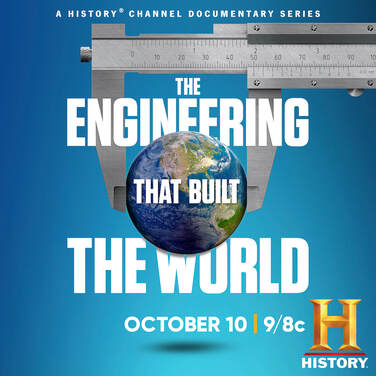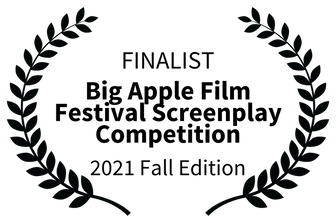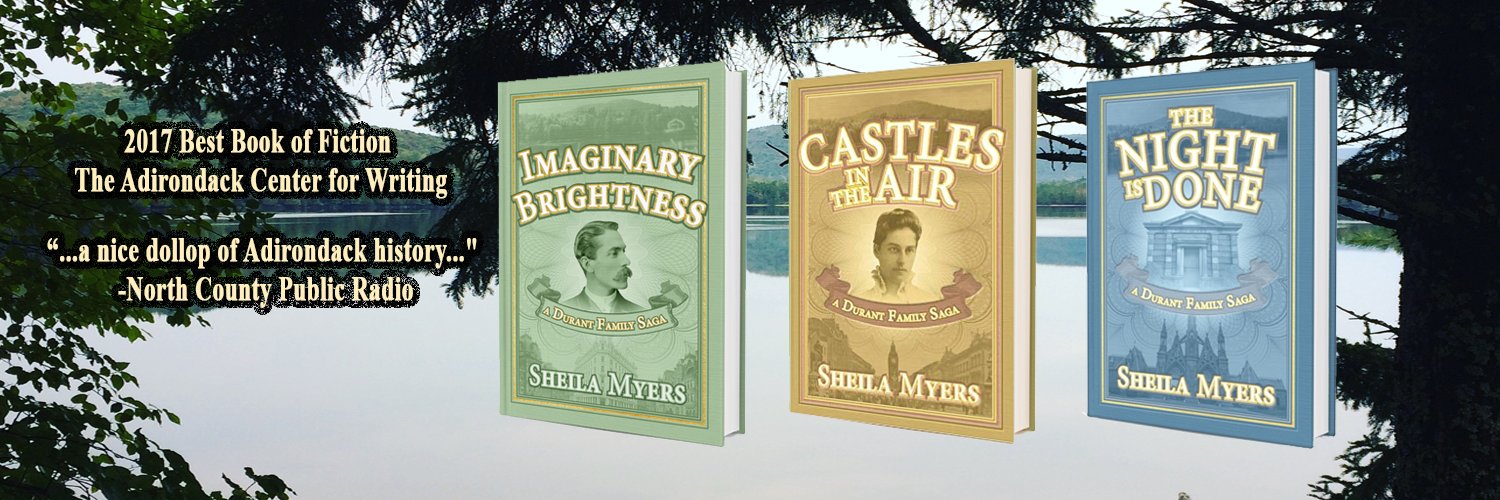|
11/23/2021 0 Comments Featured Guest on History Channel When I got the call to appear as a featured guest on the History Channel's Engineering That Built the World tv series my response was: "Me? You Sure? How did you hear about me?" I was told that the head of the history Channel recommended me. Really. Not sure if I can verify that but I will say that if it hadn't been for my blog on the Durant Family Saga probably no one would have heard of my fictional account of the family of Thomas Durant. My name is associated with this infamous family because of my relentless pursuit of information about them and blogging about the research journey. I went to the New York City A&E studios in August 2021 and spent about two hours interviewing with Karl Hollandt and his crew from Six West Media. And while they only used about three minutes of the total interview, I was thrilled to be a part of the episode about the building of the Transcontinental Railroad titled Race for the Railroad. I'm not an expert on the Transcontinental Railroad but I am well versed in the motivations behind why Thomas Durant conspired to take over the Union Pacific Railroad and control the contracts - so he could bilk the U.S. government out of millions by over charging for construction. It was the money he made during this time period (1864-69) that allowed him to acquire the half million acres in the Adirondacks which he planned to exploit as a playground for the rich during the Gilded Age. His son William was supposed to spearhead this venture and if you read my novels you will learned more about what happened to Thomas Durant's legacy. If you missed the first episode you can stream it online here.
0 Comments
10/10/2021 1 Comment From Novel to Screenplay I had this idea that my Durant Family Saga trilogy would get optioned one day as a spin-off of the popular streaming series Hell on Wheels, and I’d make a million dollars. That hasn’t happened. Actually, I didn’t set out writing the Durant Family Saga with the idea it would be adapted to a screenplay. That idea came later while working on my second novel in the trilogy and a fan pointed out that the family patriarch, Doc Durant, was also the main character on the tv series Hell on Wheels. Was it possible? Serendipity provided me the opportunity to connect with an entertainment executive via a zoom chat who suggested a realistic scenario. “You’re not a best-selling author, and no one is going to come knocking, nor will they pay a screenwriter 25k to write the pilot episode of a series.” So, he said, “Write it yourself.” I told him I’d give it a try and that my philosophy on writing has always been that if it ever feels like it’s a hardship, or I start to hate the process, I’d quit. He requested I develop a pilot episode and what the industry terms a ‘bible’ for the series. A bible, in a novelist’s world, would be a multiple-page synopsis, laying out each season of the series, the major plot points, and the trajectory of the story. My task was to condense nine hundred pages of my novels to fourteen pages (covering four seasons). We left it that I would send him my script when I was ready. I took an online class on scriptwriting that I could do at my own pace. I listened to webinars on the craft of writing scripts and bibles. I read everything I could. And I hired a script editor that I found thanks to Lucy V. Hays and her Bang2Write website. It took months but I finally felt confident in sending the draft of my pilot episode (about 45 pages) and the bible for the series. This is what I learned along the way. I hope it helps you if you are thinking of doing this yourself. 1. Purchase software for scriptwriting. I bought Final Draft. It formats everything for you so you don’t have to worry about margins and headers. You will need software made for scriptwriting so you don’t lose your mind over this detail; learning how to write a script is challenging enough. 2. Script readers crave white space. A script consists of Scene Heading (Int. Cabin, Day) Action, and Dialogue. Out the window went all of my pretty descriptions of place which I’m known for in my novels. I read recently in a Twitter thread by a script reader, don’t describe the sunset, we all know what one looks like. That was hard for me. Out of nine hundred pages of my trilogy, I’d guess 1/3 third is descriptive of the Adirondack mountains. Indeed, I’m writing another script based on a short story I published about a millennial being stalked by a mountain lion while snowshoeing. I’m finding it challenging not to detail the majesty of the mountains and the snow glimmering in the sun. 3. It’s all about tense. The action in the script is all present tense. This was pointed out to me by my editor. She waits for him, not She waited for him. Novelists tend to write in past tense so this was a difficult transition for me and takes a keen eye to catch. I got to the point where I searched for ed and ing words to glean where I might need to change tense. 4. POV – pick one. My novels have multiple POVs, hence when I wrote my first draft of the pilot I had multiple POVs. My editor suggested I choose one character to be the lens for the series. He reasoned that it helps the audience engage with the show because they are invested in the character’s journey. I decided to make Doc Durant’s daughter, Ella, the main POV. I’ve written about her in previous WWWB blog posts and published an essay titled The Other Durant. Her father and brother have biographies written about them, and although she was an author and poet, she didn’t even have a Wikipedia page when I first started writing about the Durant family. I questioned how to write a script with one POV if Ella is at a London dinner party while her brother William is squandering the Durant fortune clubbing in New York City? Could I write scenes without Ella in them? I would need to do so to move the plot along. He said, it won’t matter, if done right, the audience will know the arc of the story revolves around Ella and her fate. An example is The Crown series. Queen Elizabeth is not in every scene, yet we know that the people around her and everything they do, every decision they make, impacts HER. 5. Develop your logline. Your logline is your elevator pitch. What is the concept of your pilot? My logline is 1872. Bankrupt railroad tycoon, Doc Durant, summons his family home from London to rebuild their fortunes in the Adirondack Wilderness. For his daughter Ella, it means losing the love of her life and the high society lifestyle she’s grown accustomed to and she’ll do anything to stay. For the adaptation of my short story The Encounter: A Xanax-addled Millennial faces her greatest fears when she’s stalked by a mountain lion while snowshoeing in the woods. 6. Explore the craft, learn about the industry. I sent my final draft of the pilot to my industry connection but I also entered it into a few screenwriting contests through COVERFLY. I figured it can’t hurt to cast the net wide and get some feedback. My entry to the FilmFreeWay's Big Apple Screen Festival placed as a finalist. The challenge of writing a screenplay allowed me to explore a new craft, new industry and sparked my creativity. It has given me a creative outlet while I wait on the submission and revise and resubmit for two of my novels. It has honed my focus on character development and it has given me a renewed interest in writing for a different type of audience. If you want to see your novel on the screen one day—go for it. This article first appeared in Women Writers Women's Books April 2021
Inevitably when I give a talk about my Durant Family Saga trilogy, I get asked if I've been approached by producers who want to turn it into a tv series or movie. Usually, these people are avid fans of the t.v. series Hell on Wheels. This show had a five season run starting in 2011. It was an AMC series that was then picked up by Netflix. The setting is mid 1860s and the plot is about the construction of the Transcontinental Railroad which connected the eastern and western states in America.
I was almost done writing my first novel in the saga when someone alerted me to the series. I hated to watch it at first because I didn't want the show to taint my view of the main characters in my novel who also play a leading role in the tv series: Dr. Thomas Durant (Doc Durant) and Collis P. Huntington. In the series Doc Durant is played by Colm Meany who does an excellent job portraying him as the blustery, conniving robber baron that he was as head of the Union Pacific. Collis P. Huntington, played by Tim Guinee, is head of the Central Railroad, and Doc's arch enemy. When Doc Durant was done with the Transcontinental he was mired in debt and lawsuits. But he happened to have acquired 1/2 million acres of land in the Adirondack wilderness to exploit. He summoned his son William and daughter Ella back home from their posh life in England to help him regain the family fortune. When Doc Durant dies, his enemy Huntington befriends Doc's son William (a friendship that leads to William's downfall). When I discovered this I knew I had a great plot twist on my hands. I continued to watch the series as I wrote books two and three but by then, Doc Durant was dead (he dies in novel 2) and I was focused more on Collis and his relationship with Doc's son William. My novels continue where the Hell on Wheels Series ended. I'm not one to fantasize about success or making millions, but when I realized what I was writing was a sequel to the stories of two of the main characters on Hell on Wheels, I registered my saga with the Writers Guild just to be on the safe side. While having your books picked up for production is every author's dream, it's also a long shot. At this time, my pitch is out there - sitting in industry person's email inbox. Where will it end up? Who knows? If I've learned anything from this process it's that a lead may take you on an incredible journey you hadn't anticipated. When I started writing the Durant Family story, I thought I was going to be writing a love story set in the wilderness, with William Durant as the leading man, and found myself tracking his family story all over the place: museums and libraries all up and down the east coast, England, and an auction house. I had descendants of the Durants provide me with family lore; a couple from Pennsylvania tell me they had Ella Durant's scrapbook sitting in their attic for over three decades and didn't know what to do with it until they read my blog about her; and an archivist at the NY Law Library help me track down a Durant sealed divorce file from 1898. When I started this writing journey I never thought I'd be breaking the wax seal of a 100 year old divorce file in the basement of a Manhattan Courthouse; nor did I think I'd be writing a trilogy, or speaking to over 300 people each year about my novels. If I've learned anything it's that one never knows where a story might lead. You just gotta have faith it will end well. |
AuthorSheila Myers is an award winning author and Professor at a small college in Upstate NY. She enjoys writing, swimming in lakes, and walking in nature. Not always in that order. Archives
April 2024
CategoriesAll Adirondacks Algonquin Appalachia Award Cades Cove Canada Chestnut Trees Christmas Civilian Conservation Corps Collis P. Huntington Creativity Doc Durant Durant Family Saga Emma Bell Miles Finger Lakes Great Depression Hell On Wheels Historical Fiction History Horace Kephart Imagination National Parks Nature Publishing Review Screenplay Short Story Smoky Mountains Snow Storm Stone Canoe Literary Magazine Thomas Durant Timber Wilderness World War II Writing |
|
|
All materials Copyright 2022
Any reproduction, reprint or publication without written consent of author prohibited. |

 RSS Feed
RSS Feed